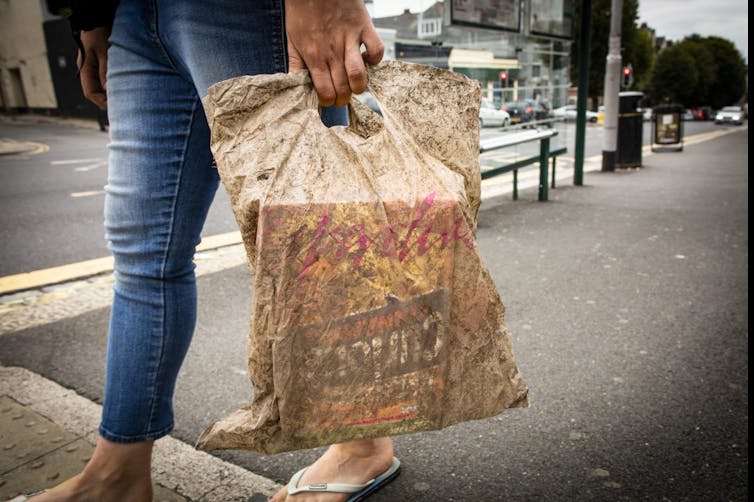
By Isabel Thomlinson, PhD Researcher, Centre for Sustainable Chemical Technologies
The idea of a “biodegradable” plastic suggests a material that would degrade to little or nothing over a period of time, posing less of a hazard to wildlife and the environment. This is the sort of claim often made by plastic manufacturers, yet recent research has revealed supposedly biodegradable plastic bags still intact after three years spent either at sea or buried underground. So un-degraded were these bags that they were still able to hold more than two kilos of shopping.
The study’s authors, Imogen Napper and Richard Thompson at the University of Plymouth, tested compostable, biodegradable, oxo-biodegradable, and conventional polythene plastic bags in three different natural environments: buried in the ground, outdoors exposed to air and sunlight, and submerged in the sea. Not one of the bags broke down completely in all of the environments tested. In particular, the biodegradable bag survived in soil and sea almost unscathed.
This may come as a surprise, but the reality of “biodegradable” plastic does not yet meet our expectations. There are different types of biodegradable plastics, which offer different degrees of degradability and generally require specific conditions in order to do so.
Plastics are made of very long molecules called polymers, which can consist of many thousands of atoms linked together in a chain. The sheer size of the molecules gives plastics their well-known properties – solid, strong, tough, flexible. Many of the plastics we use every day are reluctant to react with other chemicals, and this is why they’re so durable. But this durability is also why plastics pose a serious problem when they get into places they shouldn’t be – such as the ocean.
Degradable – to a degree
Plastic defined as “biodegradable” is made of molecules that can break down naturally, but there is no particular timescale specified for this degradation – under some conditions it can take many years
Some biodegradable plastic is also said to be “compostable”, and in this case it must adhere to stricter standards. One example is polylactide (PLA), which is used to make food packaging. Compostable plastic certified to European Standard EN13432 must break down under industrial composting conditions in less than 12 weeks.
An industrial composting plant supplies the necessary balance of heat, moisture, air and microorganisms to efficiently compost food and other compostable waste. But with a need for temperatures of 60°C or more, these are not conditions that can be provided by being buried in the ground or in a compost heap at home.
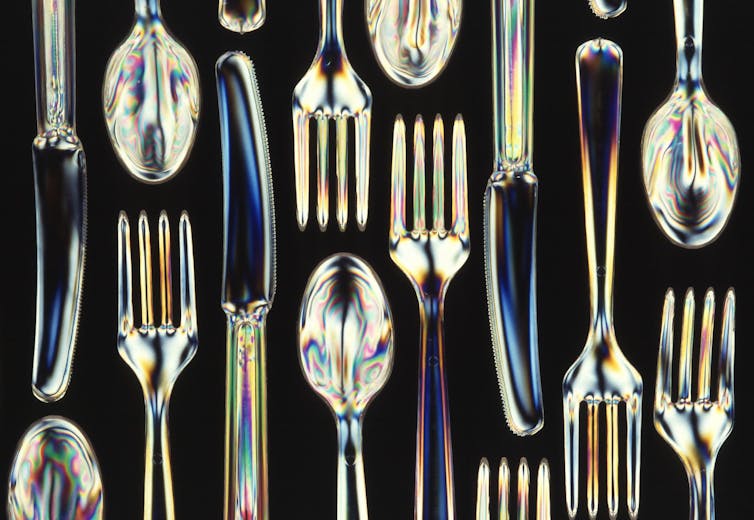
Crucially, neither the terms biodegradable nor compostable imply anything about the material’s ability to break down quickly in a natural environment. These plastics are simply not designed to degrade without special treatment, which means when leaked into the environment as litter – as demonstrated by the Plymouth study – they can be as harmful as typical plastics derived from fossil fuels.
The other type of degradable plastic tested was made from oxo-biodegradable plastic. These are conventional plastics, but they contain additives which, after an appropriate time delay, allow the plastic to react with oxygen which breaks it down – speeding up the degradation reactions that would otherwise take place over hundreds of years.
But these plastics are also somewhat controversial, as evidence suggests that they do not biodegrade completely as their manufacturers claim, but instead break down into microplastics which may persist in the environment. As a result, the EU is taking steps to restrict the use of these plastics.
The rise of bio-plastics
The ubiquitous nature of plastics worldwide means we need to switch to making them from biological sources if we are to end our dependency on fossil fuels.
There is some evidence that producing plastics from plants has a smaller negative environmental impact than making them from crude oil. But as has been seen with biofuels, this poses new problems through use of land that could otherwise be growing food crops. This is likely to improve as bioplastic industrial processes and more efficient technology become more established. Feedstocks, such as food waste, could also be used.

But bioplastics must also be disposed of correctly just as with conventional plastics, and the existence of compostable plastics must not become an excuse to litter. Instead, compostable plastics can be incorporated into a circular economy model, where waste is recovered and converted into useful products, or where compostable plastics and food waste and be returned to the soil as nutrients.
While more sustainable plastic alternatives exist, they cannot be a sustainable solution without the infrastructure required to manufacture, collect and recycle them on a large scale. At the moment, the different types of bio-degradable and conventional plastic in use can pose problems for established recycling systems if they are mixed. While 46% of plastic packaging in the UK is recycled, compostable or biodegradable plastics that are unsupported by existing recycling systems go to landfill or incineration.
What is sure is that a solution is needed soon. Currently, around a third of plastic packaging worldwide ends up in the environment – and so without significant changes, there will be more plastic by weight than fish in the oceans by 2050.![]()
Isabel Thomlinson, PhD Researcher, Centre for Sustainable Chemical Technologies, University of Bath.
This article is republished from The Conversation under a Creative Commons license. Read the original article.
Do you want to learn more about bioplastics? Watch Isabel talk about her research on this short video. If you are interested to know more about plastic pollution, read about how plastic litter poisons ocean bacteria that produce a tenth of the Earth's oxygen, and what can be done to prevent this.
Responses
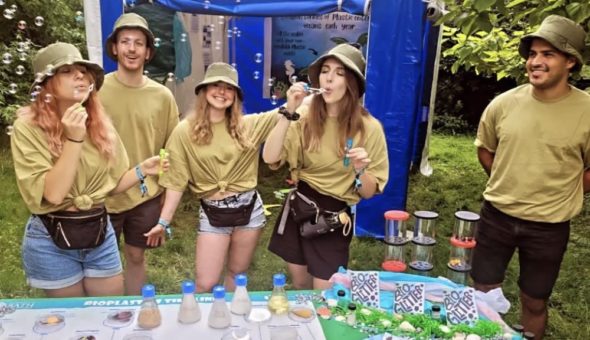
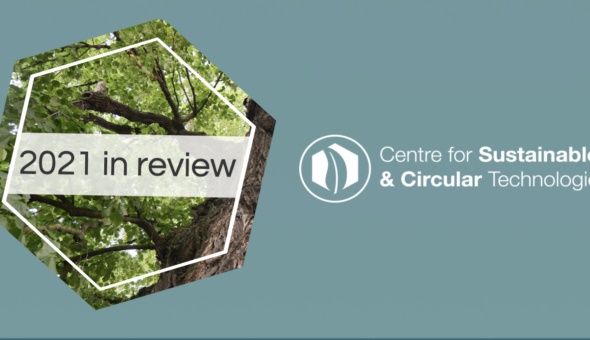
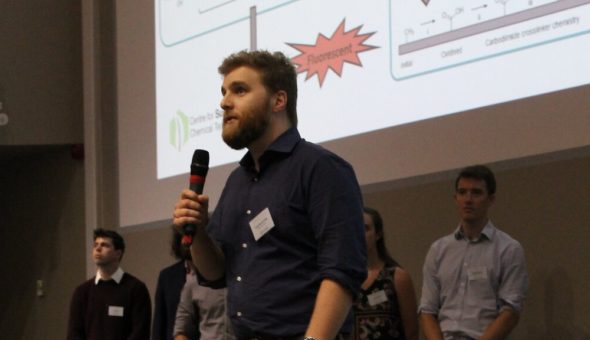
Hello Isabelle,
I came across your article which was reprinted by the Irish Examiner on May 5th. Thank you for your clearly written summary on the complex issue of plastics and their alternatives. I have a particular interest in this issue as a I grow and sell organic vegetables. I have spent two years researching an alternative to our current plastic packaging and learned all you mentioned about biodegradable, oxo-biodegradable and compostable. I would love to switch to a sustainable alternative but I have not found a suitable product. My question is this....why are there so few compostable packgaing solutions available? Considering industry can provide us with compostable coffee cups I would have thought a robust compostable film (that fair enough has to go through indutrial composting) should be achievable. Do you have an opinion on the likelihood of technical solutions reaching market in the near future? Or do we hold out for plastic-eating microbes as other research points to?
Thank you again for your excellent article.
Kind regards
Janet
Hi Janet,
Thank you for your message, and I'm glad you found the article interesting.
Some compostable packaging materials including films do exist, even if there aren’t many options available at the moment.
I imagine the reason the options are limited has to do with the cost of producing these newer plastics, and the relatively low demand for compostable plastic packaging materials. Industrial processes for making conventional plastics such as PET are very well established, and have already been made to work cost-effectively on a very large scale. Newer compostable plastics need some time to catch up! But there does seem to be an increasing number of compostable options available, as more and more companies start wanting to use them to package their products.
Another difficulty that can arise when designing food packaging is choosing plastics with the right properties to stop gases diffusing through them. Some types of plastic, including some compostable ones, are not sufficiently air tight to make sure food is preserved. And plastic’s ability to seal and preserve food is one of its really useful features, which allows us to keep food for longer and reduce food waste.
If you can’t find appropriate compostable plastic packaging for your fruit and veg, perhaps the best thing to do is sell your vegetables in paper bags or cardboard boxes, and advise your customers to recycle or compost them once they’re finished with them – but I’m sure you’ve already thought of that!
Best wishes,
Izzy